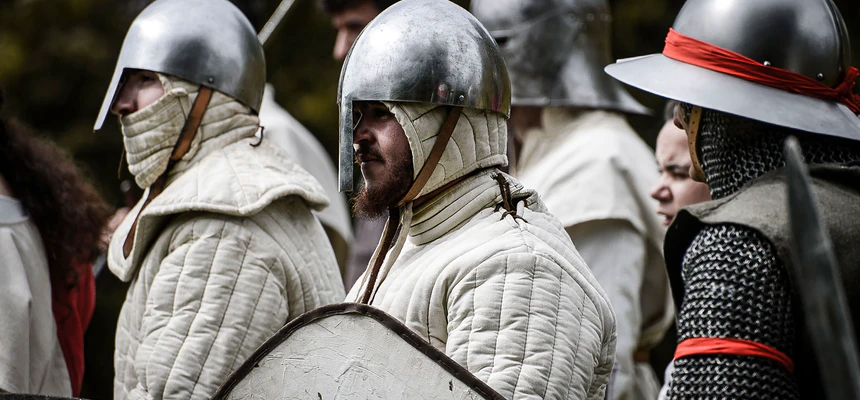
Eudes de Lagery, or Odo, as is more common, went on to become Pope Urban II, the man who started the Crusades. Born around 1035, he was member of a noble family from a village near Reims, France. He had a strong resume.
As a young man, he went to the cathedral school in Reims. Then he became an archdeacon for the Reims diocese, working with the bishop, where he assisted in administrative duties for twelve years. Later, he joined the abbey of Cluny where he was shortly appointed grand prior around 1070. In this position, he went to Rome on mission for Hugh of Cluny, the abbot. Of a similar attitude toward Catholic tenets to Pope Gregory VII, Odo supported the pope. He was given positions of authority, in return. Gregory named him cardinal-bishop of Ostia sometime between 1073 and 1080 and legate to the Holy Roman Empire in 1084. Odo was even on the short list of successors to Gregory. However, Pope Victor II ended up succeeding.
Victor II did not survive long in the papacy, dying in 1087. In March 1088, Odo was elected by acclimation of cardinals.
The anti-Pope Clement III was a force to be dealt with. It had been that way for eight years, already. Urban, who supported Gregorian reform, was not more inclined to accept Clement. Urban’s life was in danger to try to go to the Vatican. So, he spent several years traveling through France and southern Italy and holding many synods. These synods supported declarations against simony, lay investitures, clerical marriages, the emperor and the antipope.
During his tenure outside of Rome, he achieved much. He facilitated the marriage of Countess Matilda, the papal supporter, with teenage Welf V, the Duke of Bavaria. Consequently, support increased for the pope during the continuing Investiture Controversy in the late 1080s/early 1090s.
He supported the rebellion of young Conrad, Henry’s son. Conrad followed Catholic tenets and Henry followed his own desires. It got very testy when Henry started to follow a satanist cult. To protect Conrad’s position, Urban helped arrange financing for Conrad’s military campaigns.
Then, Urban encouraged Empress Adelaide’s charge of sexual coercion against Henry. There was talk of Black Masses and orgies that she could not abide.
In France, King Philip I had a bigamous marriage with Bertrade de Montfort. Urban supported the decision of his legate, Hugh of Dies, in his excommunication of the king. It took years and two popes to eventually work it all out.
William II of England was unwilling to give the Church its due. Urban worked with St. Anselm to negotiate a better working relationship.
THE FIRST CRUSADE
Continuing his travels and synods, Urban received an ambassador from the Byzantine emperor, Alexios I Komnenos, in March of 1095 at the Council of Piacenza. The ambassador asked for help against the Muslim Seljuk Turks, who had taken over Anatolia, most of Asian Turkey. Originally focused on reforms within the Catholic hierarchy, Urban went on to give a speech asking for the nobility and the people to wrest the Holy Land and the Eastern churches from the Seljuk Turks. There was an overwhelming response. This was the beginning of the Crusades.
The ultimate goals of Urban are cloudy. His eyewitnesses to the speech recorded it differently over the years. One goal was the reunification of the Eastern and Western Churches forty years after the Great Schism. Another goal that derived from the first is that a crusade would certainly cause him to gain legitimacy as the true pope, vs Clement. And, if the Churches did reunite, there would be a great defense against the Muslims as they tried to attack the Christian world. He did succeed in presenting a united Christian front. In addition, he saw Christian soldiers freeing Spain from the Muslims as part of this crusade.
The Normans appear to have won the most in the crusades. Roger I of Sicily, who earned so much land in Calabria earlier, was given the right of lay investiture, the right to collect Church revenues before forwarding to the papacy and the right to sit in judgement over Church questions. The French nobles quickly responded, riding into Rome within a few months and freeing Rome from Clement’s presence. Urban could now be at the Vatican.
Urban died 29 July, 1099, two weeks after the fall of Jerusalem to the Crusaders. He had not yet heard the news.
Originally published at POPE URBAN II AND THE FIRST CRUSADE (catholic365.com)
For more background information to ANTI-POPE CLEMENT III – Lanternarius Press

Recent Comments